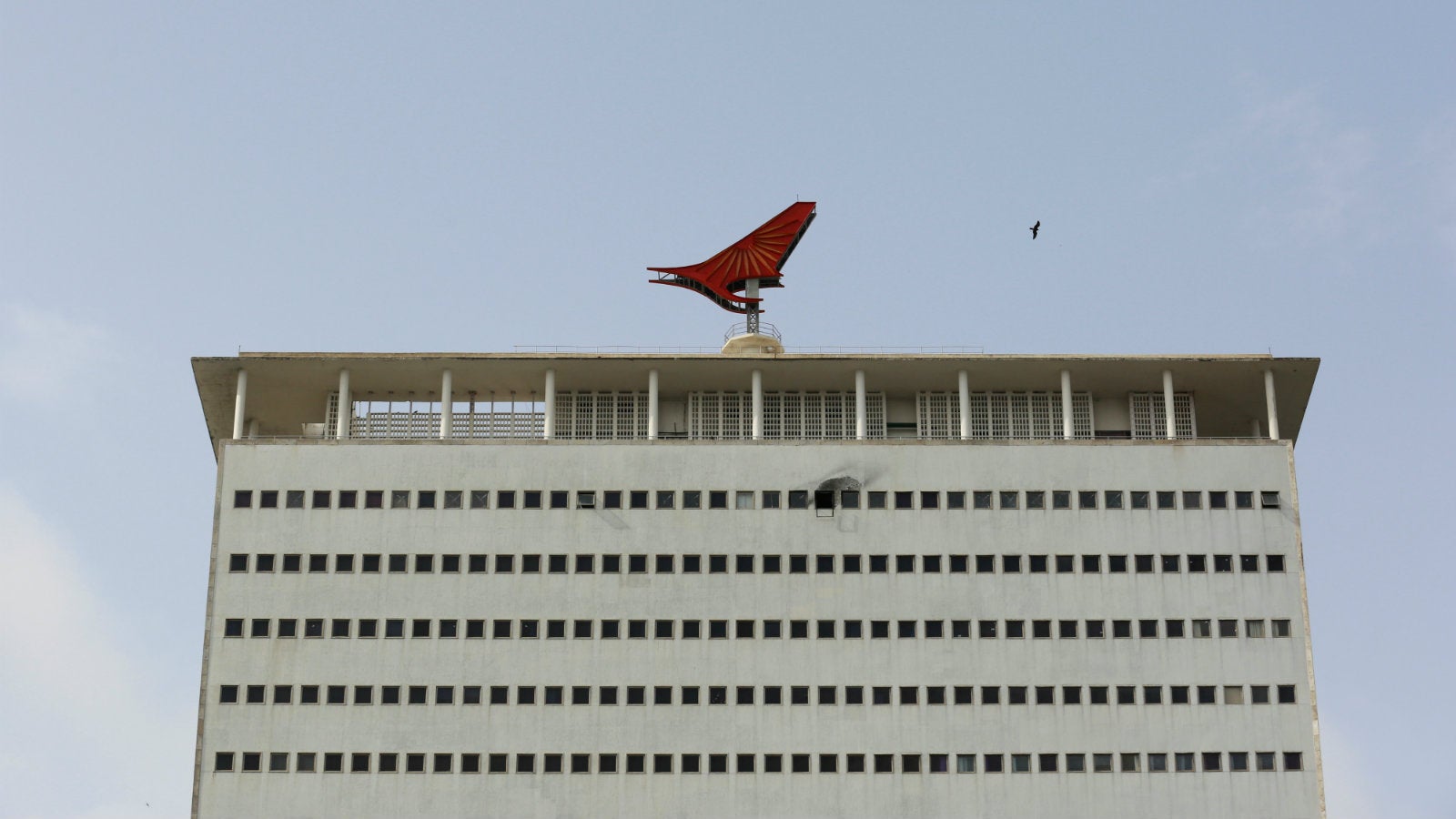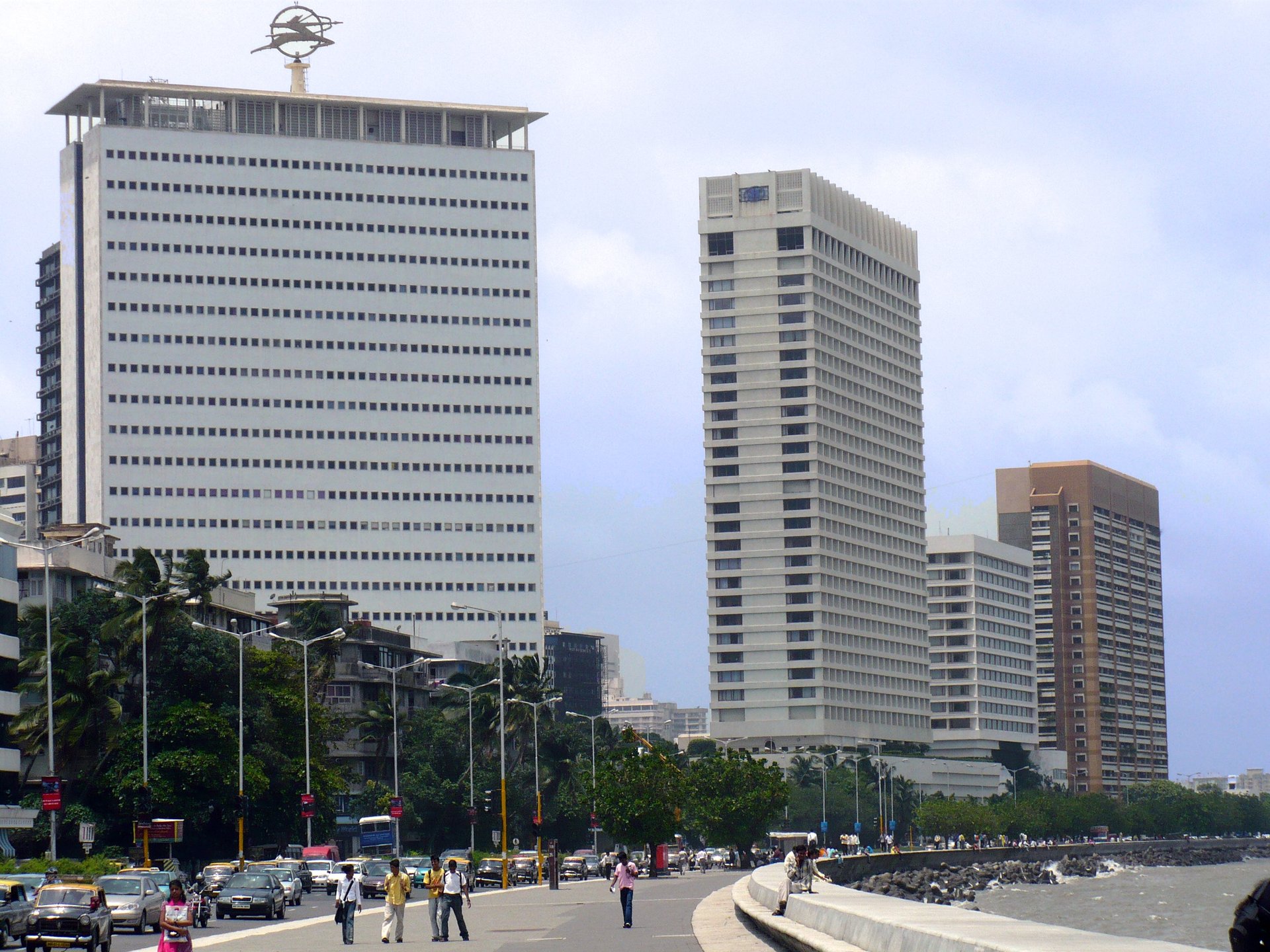A landmark from Air India’s golden era is helping keep the carrier alive
The Indian government has decided to put off its stake sale of the debt-ladden Air India after its offer drew no bidders. But luckily there’s still a steady trickle of money coming from an iconic 44-year-old building with sweeping views of the Arabian sea.


The Indian government has decided to put off its stake sale of the debt-ladden Air India after its offer drew no bidders. But luckily there’s still a steady trickle of money coming from an iconic 44-year-old building with sweeping views of the Arabian sea.
The former headquarters of the national carrier in Mumbai is offering a lifeline in the form of annual rent of Rs100 crore ($15 million) that covers almost half of Air India’s salary expenses, according to a report in the Mumbai Mirror newspaper.
Air India did not immediately respond to a request for comment from Quartz.
The modernist 23-storey building is a landmark in Mumbai, built in 1974 overlooking Marine Drive, Mumbai’s answer to Havana’s Malecón and Cannes’s Promenade de la Croisette. Designed by the American architect John Burgee, and topped with the company’s erstwhile logo of a blue centaur, the Air India building was one of the city’s first skyscrapers, besides the first building in India to have an escalator, which brought customers up from the street to the company’s ticket-booking office.
Together with the Express Towers and the Oberoi Trident Towers that rose up nearby, the Air India building spoke to the optimistic future of India’s financial capital, and the iconic airline itself.

After all, from the 1940s onwards, Air India had made a name for itself as one of the world’s finest airlines, especially known for its spectacular service. Long before Singapore Airlines and Cathay Pacific began to dominate the airspace in Asia, Air India had set the standard for flying high in style.
And the Air India building, located close to the sea-facing Art Deco apartment buildings that housed the elite of Bombay (as the city was then known), reflected this with its interiors reminiscent of the Empire State Building in Manhattan, besides its ultra-fast elevators and glamorous cocktail bar, according to Mark Martin, CEO of aviation consultancy firm Martin Consulting.
“We’re talking luxury and opulence that India had never seen in the [70s],” Martin said.
But in the decades that followed, the Air India building and its owner faced the worst of the worst. In 1993, the Air India building was one of the many Mumbai landmarks targeted in the deadly serial blasts that killed as many as 257 people in the city.
Then, as times changed and losses began to mount, the Indian government decided to merge Air India with the domestic carrier Indian Airlines, a move that is widely considered to have been a big mistake. The combined entity continued to make huge losses, weighed down by having to pay salaries to thousands of employees. The 2008 financial crisis was another blow, and as competition heated up from India’s new private airlines, the legendary national carrier was quickly left behind with mounting debt.
In 2013, a cash-starved Air India decided to cut costs by shifting its headquarters to New Delhi, where the rents were far cheaper than in the toniest address in Mumbai. By 2016, it had finally managed to rent out most of the building to tenants such as the State Bank of India, Tata Consultancy Services, the Director General of Shipping, and the Bharatiya Mahila Bank. Till then, Air India had reportedly been spending as much as Rs90 crore on the building in upkeep, but renting it out offered them Rs100 crore a year. The company continued to maintain a few floors for itself, but moved most of its operations to the national capital.
The Indian government has faced pressure to privatise the airline for years, and has failed to make any headway again. In the meantime, aviation experts say Air India is sitting on a goldmine of assets, including property in prime locations in Mumbai and Delhi, besides New York City and Paris, and a priceless art collection.
For Martin, the Air India building is just a hint of what could come if the company decided to put its assets to good use.
“What if they do the same thing for all their real estate across the world?” he said, “Not only can they pay their staff, they’ll also make a lot of money for themselves.”
Inline image by Indianhilbilly on Wikimedia Commons, licensed under CC BY-SA 3.0.